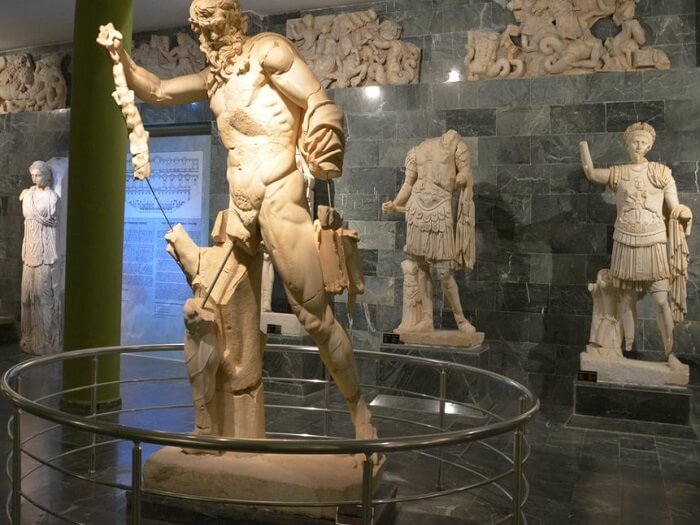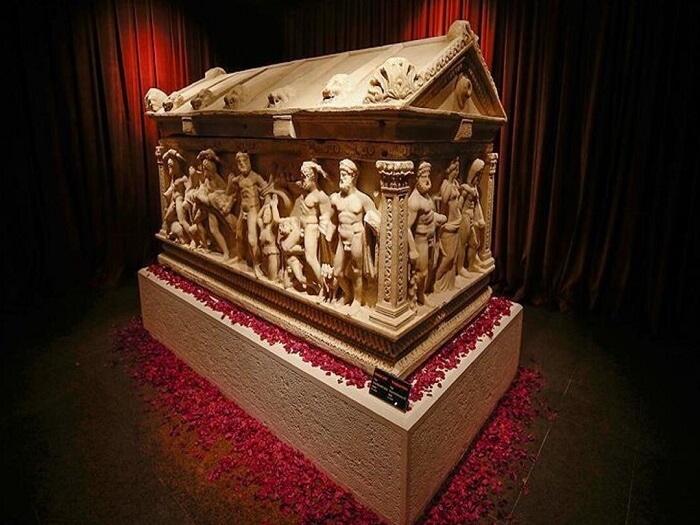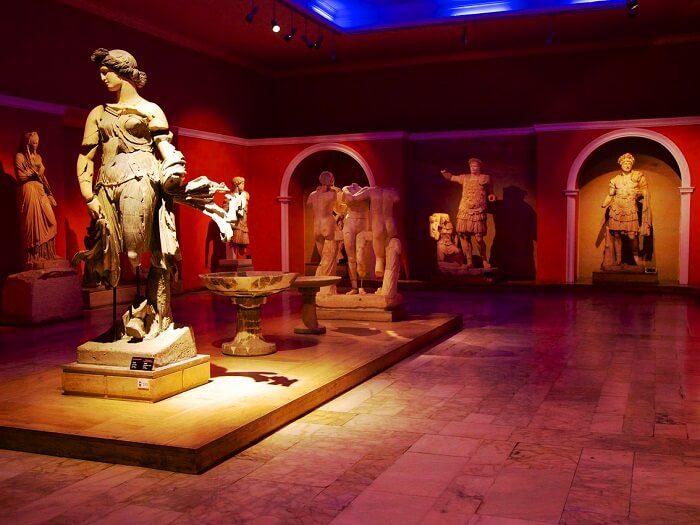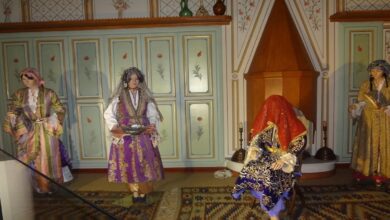One of the Best Museums in Turkey – Antalya Archeology Museum

Antalya Archaeological Museum is one of the richest museums of Roman sculpture in the world. Statues of emperors, gods and goddesses are favorite exhibits. It will be a big loss if you do not visit the Antalya Archaeological Museum.


Table of Contents
About Antalya Archeology Museum
Step foot into the Antalya Archaeology Museum, and you will instantly find yourself immersed in a magnificent world of antiquity. The museum boasts an extensive collection of artifacts dating back to the prehistoric eras, Hellenistic periods, and even Roman times. As you meander through the halls, each exhibit unveils fascinating stories and enigmatic tales of civilizations long gone.
One of the highlights of the museum is the exhibit dedicated to the ancient city of Perge. Marvel at the meticulously restored statues, mosaics, and intricate Roman architecture that once adorned this remarkable city. Stand in awe as you witness the grandeur of the Hadrian Gate, an imposing entrance that once welcomed emperors and dignitaries into this ancient metropolis.
The journey continues as you venture into the world of ancient Lycia. Admire the intricately carved sarcophagi, beautifully preserved tombs, and exquisite jewelry that provide a glimpse into the rituals and traditions of this enigmatic civilization. From awe-inspiring sculptures to delicate pottery, you will find yourself captivated by the immense wealth of history and art that unfold before your eyes.
Antalya’s Archaeological Marvels!
As you delve deeper into the museum, prepare to be spellbound by the extraordinary treasures of Antalya’s archaeology. The museum houses an impressive collection of artifacts from the Bronze Age, showcasing the craftsmanship and ingenuity of ancient civilizations. Admire the intricate gold jewelry, exquisitely crafted daggers, and ornate ceramic vessels that offer a glimpse into the daily lives and customs of these ancient peoples.
The museum’s collection of ancient coins will transport you to the bustling marketplaces of antiquity, where trade and commerce flourished. Marvel at the intricacies of each coin, bearing the faces of emperors and symbols of power. These small pieces of history serve as a reminder of the economic prosperity and cultural exchange that characterized the region throughout the ages.
No visit to the Antalya Archaeology Museum would be complete without exploring the Hall of Gods. Step into a realm where mythical deities come to life through intricately carved statues and masterfully painted frescoes. From Zeus, the king of gods, to Aphrodite, the goddess of love, each figure mesmerizes with their divine beauty and power. It is a truly enchanting experience that brings ancient mythology alive.
Interactive visit to Antalya Museum
Modern technologies are everywhere in our life. To visit the Antalya Archaeological Museum, you do not need to leave your home. High-speed internet and a good computer will take you into the world of history. Take an interactive visit to the Antalya Museum.
Exhibition halls in Antalya Museum
Antalya Archaeological Museum consists of 14 exhibition halls on an area of 30 square meters. The exhibits reflect the thousand-year history of Antalya. The museum is considered one of the most important museums in the world. It will take about two hours to see all the halls.
Hall of Emperors
In the hall of the emperor, there are statues of the rulers of the Roman Empire during excavations in the city of Perge. Priceless statues of the emperor, empresses and important people from the Roman period are on display for all to see. The Statue of Emperor Hadrian, the Statue of the Dancing Woman, and the Statue of the Priestess of Artemis have become popular exhibits in the hall.
Children’s hall
The children’s room displays toys that children used to play many years ago. The children’s section has a corner of a typical Anatolian bazaar. Regardless of your age, you will be interested in a walk in this section.
Hall of the gods
This is the most magnificent of the halls presented. The hall features statues of gods and demigods of Greek mythology. Zeus, Aphrodite, Apollo became the leaders of this exhibition.
Ceramic hall
Throughout human history, pottery has been the most important tool in everyday life.
Mosaic hall
The mosaics depict mathematicians, orators and philosophers of the ancient period. The most stunning exhibit is the three-headed statue of Hecate.
Hall of marble portraits
This is a small area where portraits of men and women are located dating back to the 2nd century BC. The sculptures are made of marble.
Perge Theater Hall
The hall contains 17 monumental sculptures. All works in this room were found in front of the stage building of the Perge Theater. The finds were found completely broken. As a result of the earthquake, the building collapsed and many artifacts were exposed under the rubble. After two years of restoration work, they are on display in the museum.
Hall of sarcophagi
Most of them were brought from the Perge necropolis. They all date from the 2nd and 3rd century BC. The second part presents sarcophagi found in the ancient cities of Patara and Limira.
Coin hall
A section of this room displays coins from the regions of Pamphylia, Pisidia and Lycia. Coins from different periods, gold jewelry, bronzes and small marble figurines. Treasures that were found during excavations. The treasure consisted of church items made of gold and silver, icons and plates.
Hall of Natural History and Prehistory
The Hall of Natural History and Prehistory features artifacts from the period of human appearance. Household items that were created for hunting and gathering food. Hand axes, scrapers, bone tools. The remains of the teeth and skeletons of Neanderthals are displayed in chronological order.
Hall of Ethnography
The hall consists of two large sections. Tiles, porcelain, religious artifacts, clocks, jewelry, locks, keys, Ottoman and Seljuk artifacts are on display.
Antalya Museum Garden
The garden displays artifacts from the Roman period, which are large in size. It is a place where visitors can relax with pleasure. If you wish, you can have tea or coffee in the cafe. Sculptures and other works are exhibited in the open area.
Ticket and visiting hours of Antalya Archaeological Museum
The Antalya Archaeological Museum is open from 8:30 am to 5:30 pm. Ticket prices change every year.
Where is Antalya Archaeological Museum
The museum is located in the center of Antalya in the Muratpasha district. 2 km from Kaleici , which is the historical center of Antalya.



